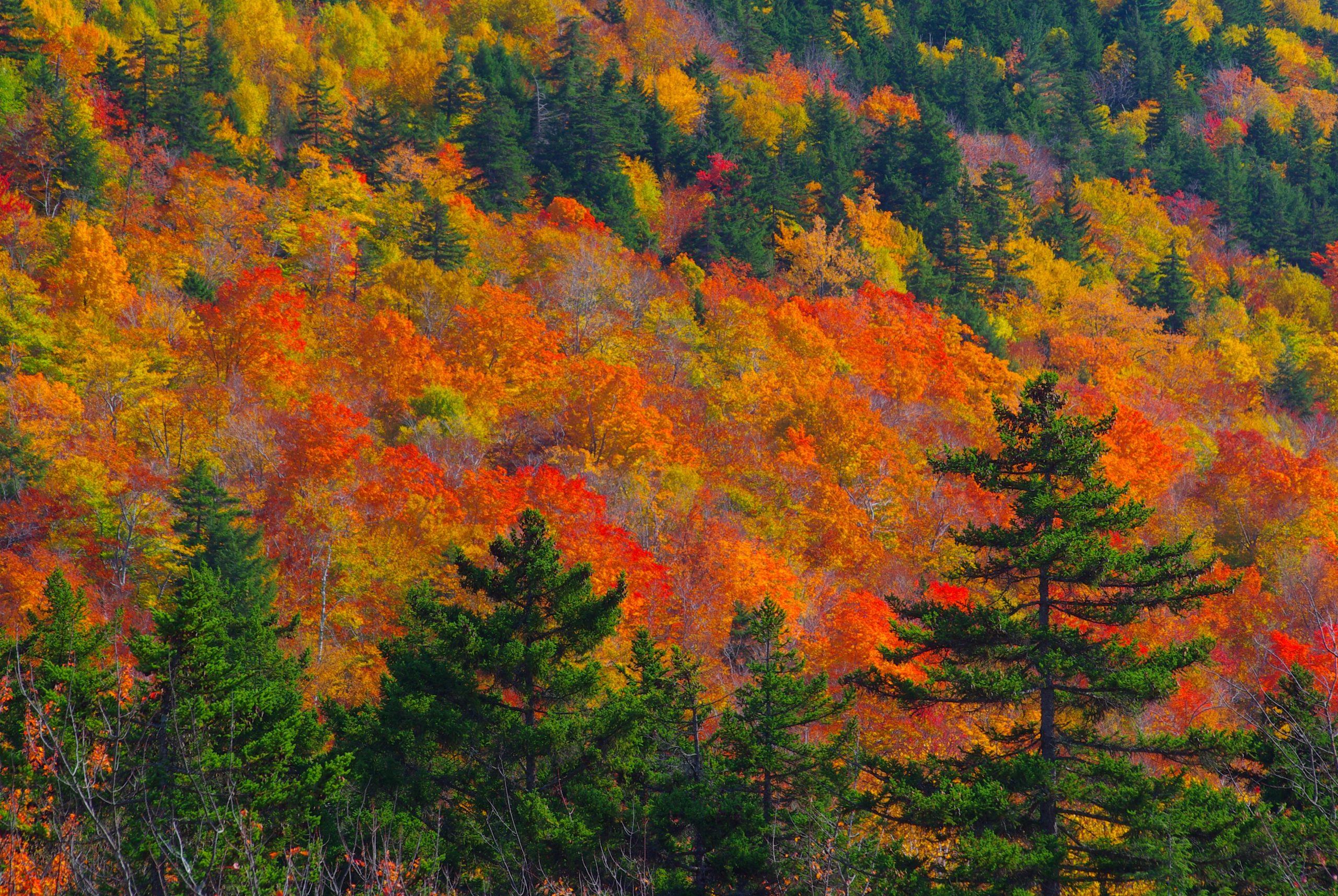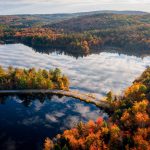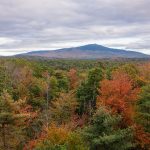New Hampshire: The Granite State
By David Lyon and Patricia Harris New Hampshire is Yankee country, and our woodsy home town of Dublin is right in the middle of it. To the east lies Peterborough, with its famed MacDowell Colony of painters, poets and thinkers. To the west, the handsome college town of Keene boasts one of the widest Main […]

Coffee By Design | Portland, Maine
Photo Credit : Katherine KeenanBy David Lyon and Patricia Harris
New Hampshire is Yankee country, and our woodsy home town of Dublin is right in the middle of it. To the east lies Peterborough, with its famed MacDowell Colony of painters, poets and thinkers. To the west, the handsome college town of Keene boasts one of the widest Main Streets in America — and glows with lit jack o’lanterns for the Pumpkin Festival in October. To our south stands Mount Monadnock, the second-most climbed peak in the world and the perfect tune-up for tackling the great heaps of stone that give New Hampshire its nickname, the Granite State.
Those rocks are hard to ignore. Forty-eight peaks of the White Mountains poke through the clouds at 4,000 feet or more (with Mount Washington towering above the rest at 6,288 feet), and they’re irresistible to climbers and hikers following the Appalachian Trail.
If riding seems more appealing than walking, the Mount Washington Cog Railway chugs up the incline as it blows great puffs of steam, and the Mount Washington Auto Road winds an asphalt ribbon to the roof of New England. The laws of physics are in the traveler’s favor. What goes up must also come down, which means a state full of long and daring ski trails in winter and thunderous waterfalls in spring. In autumn, cross-mountain highways like the Kancamagus become virtual kaleidoscopes of bright foliage.
Rusticating in the Whites has been a time-honored tradition since the Gilded Age. The clock seems to slip back a century at the genteel resorts of Bretton Woods, Mountain View Grand, and The Balsams (where the voters of Dixville Notch always have the first word in national elections).
Loons call across the lakes at night, from the piney shores of Newfound Lake to broad Lake Winnipesaukee. This body of water is as big as its name, with the razzmatazz summer fun of Weirs Beach on one end and the gracious restraint of Wolfeboro on the other. When winter grips the waters, dog sleds and snowmobiles replace canoes and speedboats. Life is to be lived, or as the state motto says, “Live free or die.”
New Hampshire has more fresh water than salt, but the seacoast, while short, is decidedly sweet. The marsh-backed sandy shores of Hampton Beach edge into the stony cliffs and pocket beaches of Rye en route to Portsmouth.
When this port town at the mouth of the Piscataqua was young, sailors called it Strawbery Banke for the profusion of fruit on its shores. The nickname sticks to this day to a fine museum that shows how people lived here over the last three centuries.
Fine farmhouse fare makes up the spread at the Shaker Table in Canterbury Shaker Village, one of two New Hampshire communities of this mystic sect. The other sprawls in Enfield, almost within hailing distance of the Connecticut River, the handsome Dartmouth College campus in Hanover, and the Saint-Gaudens National Historic Site in Cornish, where yet another Granite State art colony flourished.
With astonishing mountain vistas, rolling pastures, and primal northern forests, New Hampshire is a state of grandeur. But grandeur doesn’t preclude intimacy. Waitresses at the breakfast cafes always seem to call you “hon,” the aroma of warm cookies wafts from little B&Bs in the afternoons, and you’ll surely get an earful of local gossip at the village church’s Saturday night bean supper.








I can’t believe nobody posted any comments about New Hampshire! How sad. New Hampshire is a beautiful state, and perfect representative of the quintessential New England. After all, Yankee Magazine is BASED in New Hampshire, someone should honor the state with a comment! So I will. We have traveled there many times and loved it. Beautiful Franconia is one of our favorite places to visit for it’s foliage in the fall. We have never missed a year in the last 20 to go to Keene in the Monadnock area in October for the pumpkin fest, and Lake Win is picture postcard perfect. New Hampshire absolutely deserves a nod
Live free or Die, we head up every year, Although now its only once a year as we reside in FL. However, when we lived in Jersey, we would take many trips to Lincoln, we owned a nice townhouse that over looked the Loon Mt ski resort. We would go up maybe four or five times a year. Of course, all would be from May though Oct. We ski but love warm weather. We sold out in 2006…..Ahhh the good old days, businesses thriving and $1.50 gallon for gas. What the heck happened….